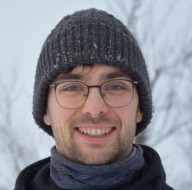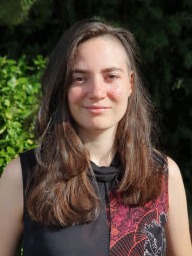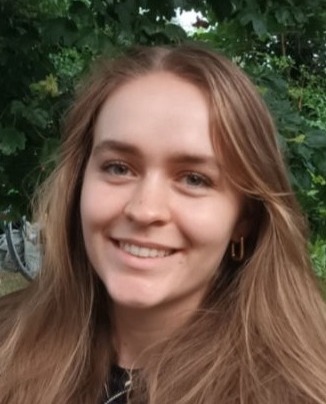Previous news
Previous news can be found in our archive.
The Axion Dark Matter research group focuses on searches for dark matter in the form of axions and axion-like particles (ALPs) both in astrophysical observations and dedicated laboratory experiments. It is supported by a Starting Grant from the European Research Council. The group is hosted at the Center for Cosmology and Particle Physics Phenomenology (CP3 Origins) University of Southern Denmark (SDU) in Odense and at the Institute for Experimental Physics at Hamburg University.
The nature of dark matter, which makes up more than 80% of the total matter in the Universe, is one of the most pressing questions in fundamental particle physics, astrophysics, and cosmology. Axions and ALPs are promising dark matter candidates which could produce specific observational signatures in astrophysical observations and in laboratory searches.
Please feel free to contact us for potential thesis projects!
before 2024
Previous news can be found in our archive.
January 2024
Two new post docs join our team. Eike recently finished his PhD at Stockholm University and is already an internationally recognized expert on the search for axions using observations of supernova explosions. Elmeri joins us after having finished his PhD at the University of Turku and having worked as a cryo engineer at BlueFors. We are very much looking forward to his contributions in the lab!
February 2024
Johanna will do her master thesis in our group and investigate the contribution of proton cascades to the gamma-ray signal from GRB221009A. Welcome Johanna!
February 2024
We have two new proceedings out that give the latest update on our TES detector. We have new simulations for our backgrounds, first results for our sensitivity measurement, and can use the TES for searches of light dark matter particles. Check out the proceedings here and here.
July 2024
Sara has submitted her first paper to PRD! In her work, Sara searched for the contribution of decaying dark matter axions to the cosmological photon background. Congratulations, Sara! The paper is out on arXiv.
September 2024
To brilliant master students, Katrine and Constant join our team. Katrine will work on the interpretation of the GRB221009A with photon-axion-like particle oscillations. Constant will look at the sensitivity of the ALPS II detector to detect gravitational waves from a merger of primordial black holes.
October 2024
We had a very busy conference season this year. Members of our team had invited talks at the Bernoulli program for magnetic fields, at the IDM 2024, at the TeVPA 2024, and at the 2nd Cosmic WISPers meeting. We also had two plenary talks and two posters at the 2024 edition of the Patras workshop. Well done everyone!
January 2025
Johanna successfully defended her master thesis on explaining the TeV emission from GRB221009A with cosmic-ray induced cascades. Congratulations!
February 2025
As our first PhD student, Rahul successfully defended his thesis! Congratulations!
February 2025
Check out this press release from SDU on our current and planned near future lab activities and how we hope to find dark matter in our University basement

Eike Ravensburg
Axion theory, Fermi LAT
SDU

Atreya Archaryya
CTAO, H.E.S.S. Fermi LAT
SDU

Elmeri Rivasto
ALPS II
SDU

Sara Porras Bedmar
Phenomenology, H.E.S.S.
UHH

Constant Peters
Theory, ALPS II
SDU

Katrine Kennedy
Astrophysical observations, modelling
SDU
Using the latest data compilation of measurements of the cosmological photon background from optical wavelengths to X-ray energies, we searched for a decay line signal from axion dark matter. We could derive new constraints that improve on previous results by roughly one order of magnitude. Also, we find that axion parameters that could explain an excess observed with the LORRI instrument on the New Horizons probe are in tension with other experiments. The paper is submitted to PRD and available on arXiv.
We re-analyzed gamma-ray data from certain distant galaxies taken with the H.E.S.S. and Fermi telescopes to search for extended gamma-ray emission around these sources. Usually, we believe that these sources could be pointlike, but gamma-ray induced particle cascades could lead to a halo around them. The size of the halo depends on the strength of intergalactic magnetic fields. We didn't see any sign of extended emission, which leads to new strong constraints on the magnetic field strength. Our findings our published in the Astrophysical Journal Letters and also available here.
For the first time, we have applied machine learning to data of our transition edge sensor in order to improve the rejection of unwanted background counts. As it turns out, approaches using neural networks outperform our previous analysis methods and suggest that we can efficiently suppress our dark current levels. Check out the full paper published in Annals of Physics or on the arXiv.
We used Fermi-LAT observations of bright gamma-ray outbursts of flat spectrum radio quasars (FSRQs) to search for oscillations between photons and axion-like particles. For the first time, we self-consistently include photon-photon dispersion off the radiation fields in these environments and let the magnetic field free to vary in our fitting. For the first time we are able to constrain the ALP photon coupling for ALP masses up to 200 neV with gamma-ray observations. The paper is published in PRD and available here.
In the presence of dense photon fields in the vicinity of gamma-ray production sites in the jets of active galactic nuclei, the conversion of photons into axion-like particles competes with photon-photon interactions such as dispersion and photon absorption. In our recent study, which is accepted in PRD (and available on the arxiv) we show that both effects are important to include when searching for ALP signatures in the spectra of these sources.
We estimate the sensitivity of the low energy technique of the LAT to detect a gamma-ray burst caused by the conversion of axion-like particles produced in extragalactic core collapse supernovae. We find that we could detect such a burst from supernovae in galaxies up to 10 Mpc (~30 million light years) away. The study is accepted for publication in PRD and available as a preprint on arxiv.
We have identified 15 core collapse supernovae observed with the Zwicky Transient facility (ZTF) that are potentially well suited to search for a gamma-ray burst signal produced from axion-like particles. With the continued operation of ZTF and the upcoming Rubin Observatory, this sample will grow significantly in the near future. Check out the proceedings article for the ICRC2021 on arxiv and our original study published in 2020 in PRL.
An open-source python package that calculates the conversion probability between gamma rays and axions/ALPs in various astrophysical magnetic-field environments. Check out the documentation here and the proceedings article for the ICRC 2021.
Using realistic simulations of future observations with CTA of active galactic nuclei, we present the sensitivity of CTA to detect signatures of axions and ALPs, to constrain the extragalactic background light, detect intergalactic magnetic fields, and search for Lorentz Invariance Violation. The paper is accepted in JCAP and you can find the preprint here.
Together with Jamie Davies from Oxford, we have put out a paper about the oscillations of photons into axion-like particles in the magnetic fields of jets of active galaxies. It turns out that the exact morphology of the magnetic field in the jet can be quite important - we need multiwavelength data to constrain it. Check out the paper published in PRD here.
Website Software